Polki Diamonds: The Oldest Diamond Cut is Everyone’s New Favorite

“Polki diamonds reflect light as if the sun was hitting a beautiful body of water,” says Siddharth Kasliwal, who is from the storied family-owned jewelry house Munnu Gem Palace.
The polki diamond, the world’s oldest cut, has also been described as ‘softly glowing like the moon.’ It’s a diamond style that seems to evoke a sense of dreamy romance, and it’s being revived in contemporary new styles.
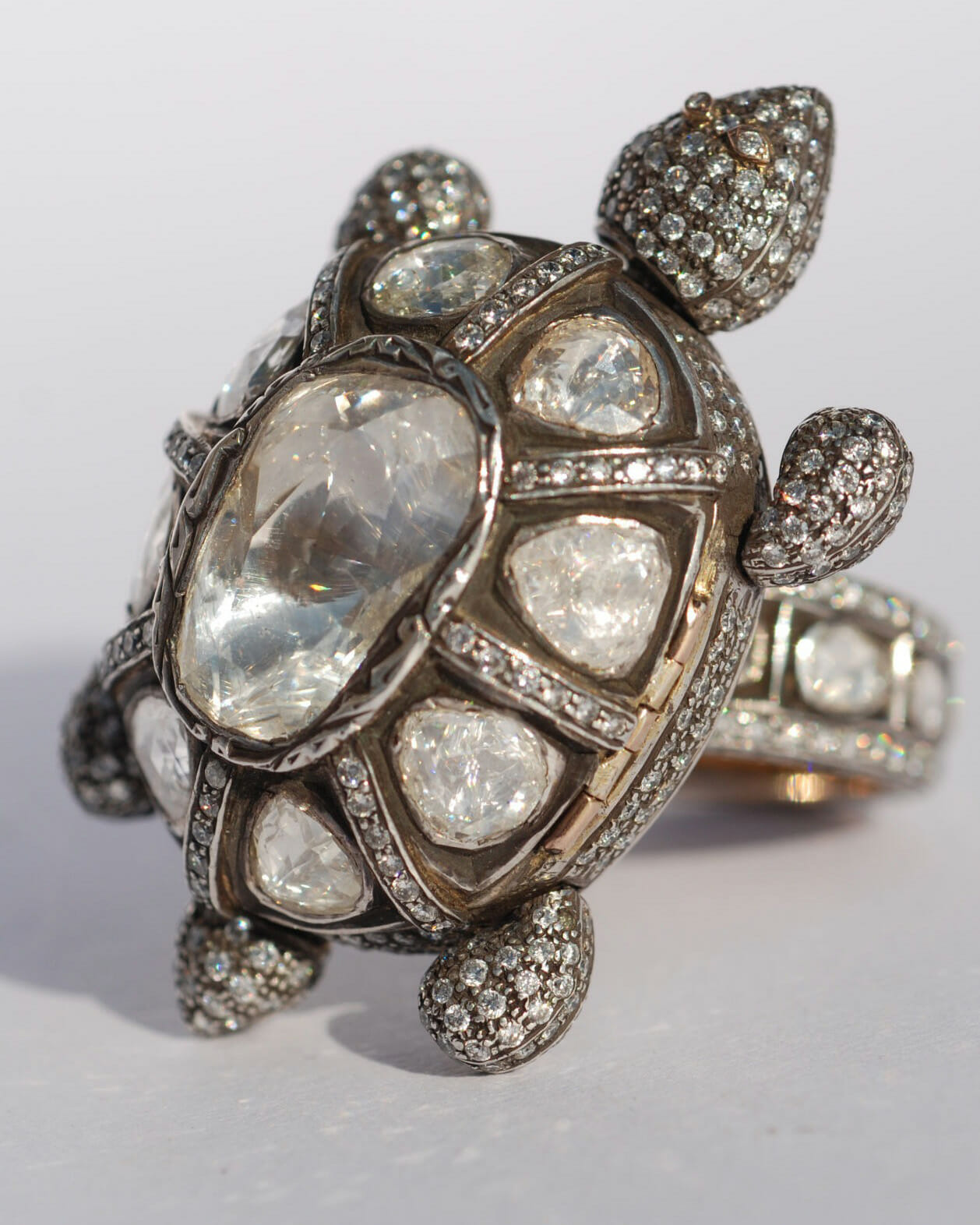
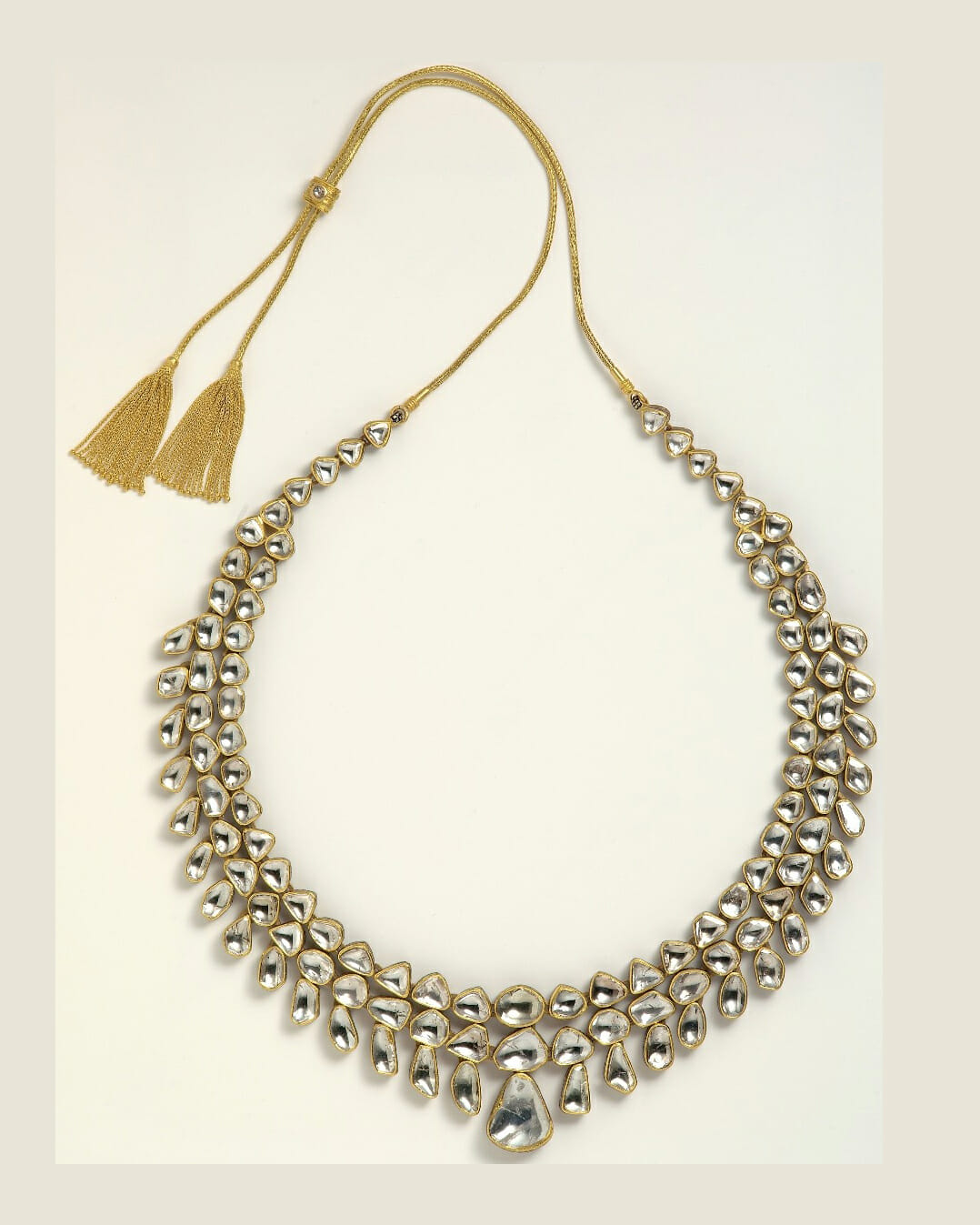

Read More: Mellerio: The Oldest Jeweler in the World
What is a Polki Diamond?
Just about everyone wants a natural diamond, but not everyone wants the same style or cut. Many people covet traditional diamonds, which are precision cut with multiple facets to reflect the light and create the maximum sparkle.
The polki diamond, in contrast, is imperfectly shaped, smooth and radiates a soft glow.
Actually, these diamonds are often described as ‘uncut’ because it isn’t faceted, but softly rounded to smooth out its inherent edges, and polished to retain its natural structure; the final effect is like a tumbled stone— imperfectly formed but smooth, with an organic appearance.
The Polki Diamond: Favored Diamond of Mughal Indians

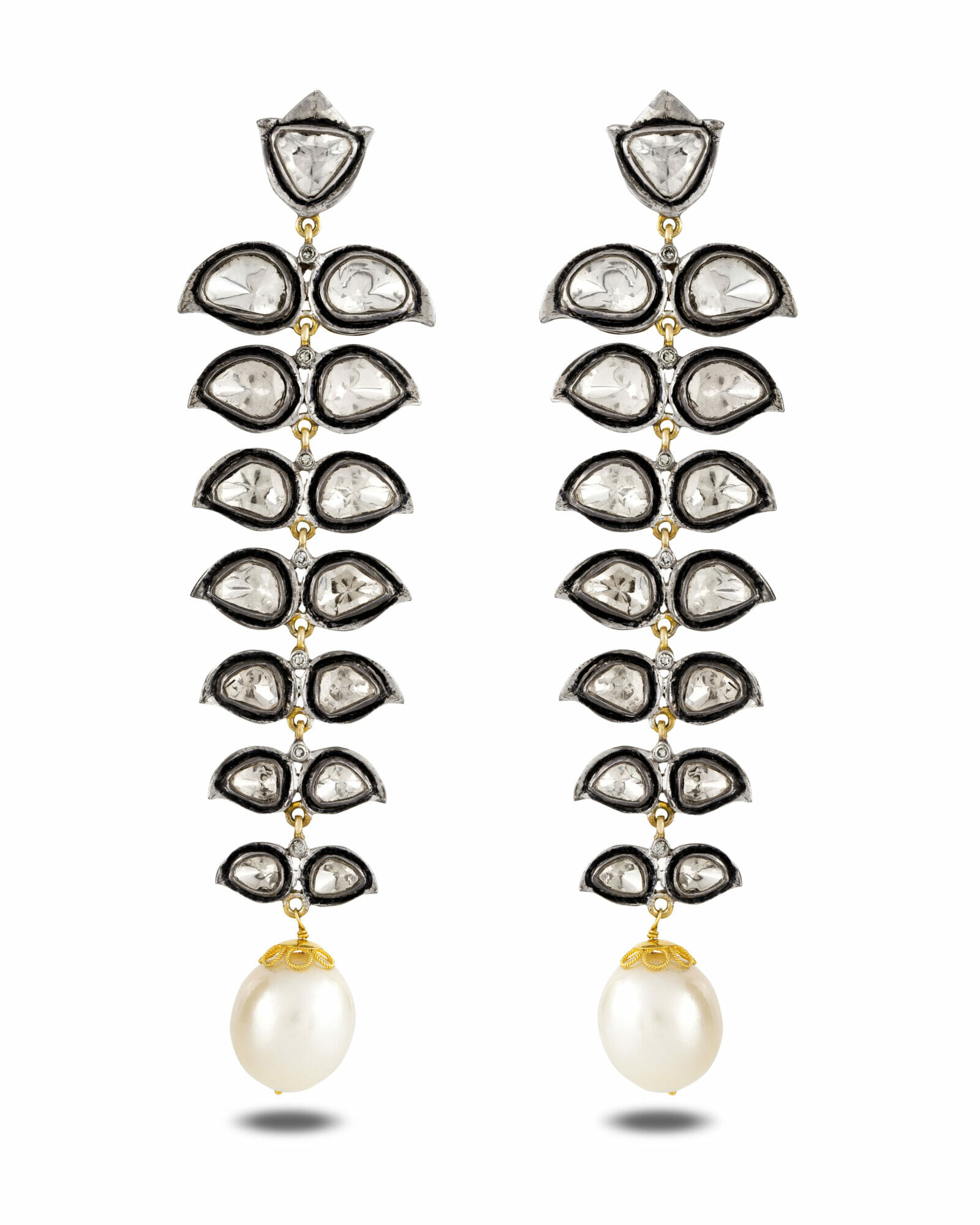
Polki diamonds originated in India, the source of the world’s first diamond discoveries, about 2,500 years ago. “Dating back to the Maharajas, these diamonds have been prominently used for the most significant ceremonial jewelry creations, from daggers and plates to chess sets and magnificent necklaces,” explains Kasliwal. “Even today the most intricate and complex creations for important ceremonies in India are made with polkis.”
Kasliwal’s family business has an archive dating back to the 18th century featuring their lavish polki diamond jewelry designs. The stones aren’t just reserved for just traditional jewelry anymore; Kasliwal says polki stones are starting to pop up frequently in more contemporarily refined pieces.
“From the most traditional jewels my forefathers made for the Maharajas, to the designs I find myself sketching, polkis have the unique ability to be both incredibly traditional and totally modern,” says Kasliwal.
The Diamond of the Moment
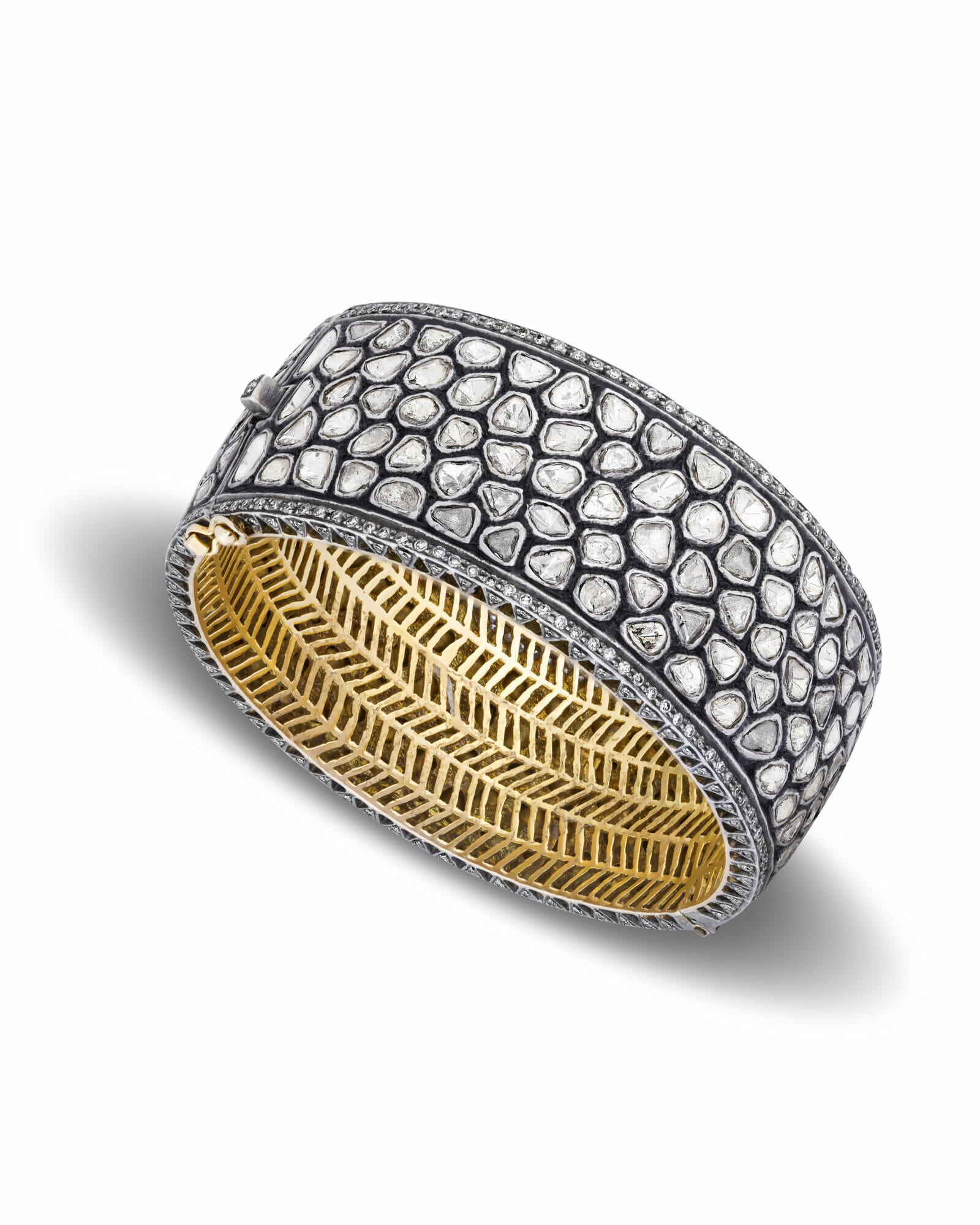
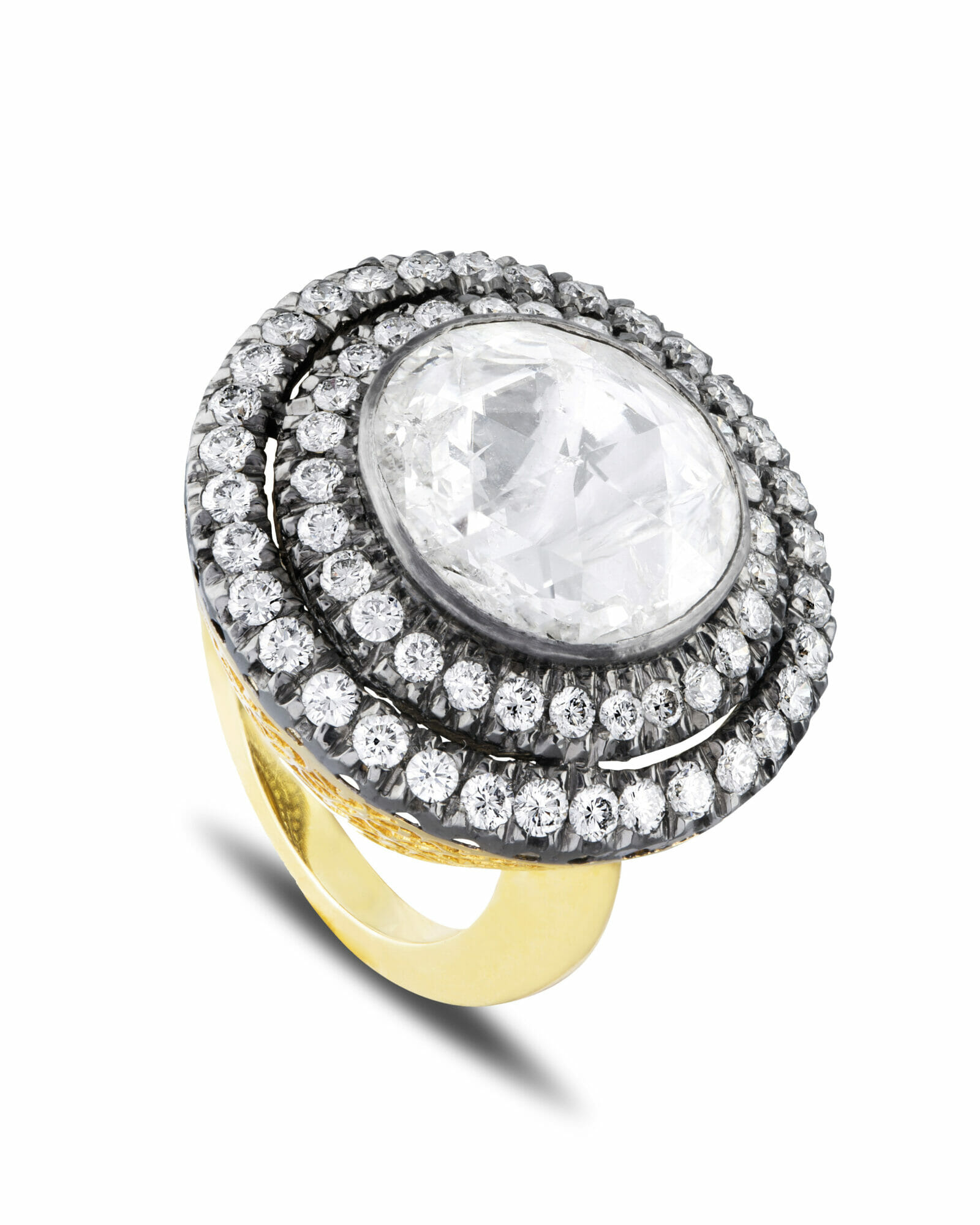
Bigger, bolder jewelry is a growing trend, and polki diamonds are a way to feature larger stones that are more affordable than classically faceted diamonds. Polki diamonds are perfect for people who prefer a quieter style, but still want large scale impact.
Designers are drawn to the diamond style because unlike precision cut stones, each has its own unique charm; no two are alike. “They each have a unique character—often organic asymmetric shapes—and they are not overtly flashy,” says Sameer Lilani, Amrapali’s managing director. The houses uses polki diamonds in everything from ornate chokers to chandelier earrings that have subtle shimmer.
The subtle glow, says Lilani, makes them perfect for Amrapali’s new men’s diamond collection coming out this fall. The style also speaks to the way both women and dress today: “As tastes are changing so will jewelry design, along with traditional white diamond pieces, clients want something slightly more understated.”
Polki Diamond Engagement Rings
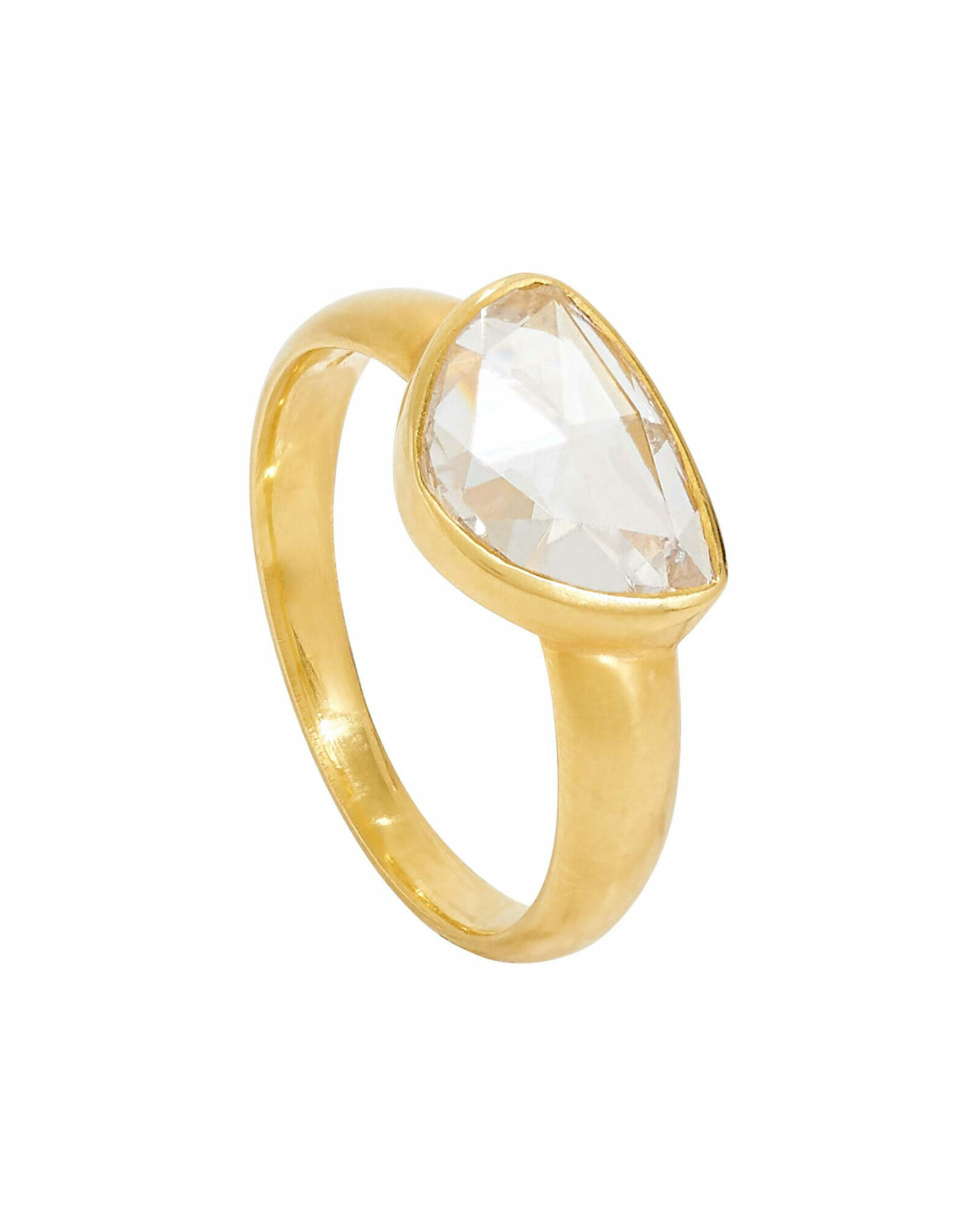
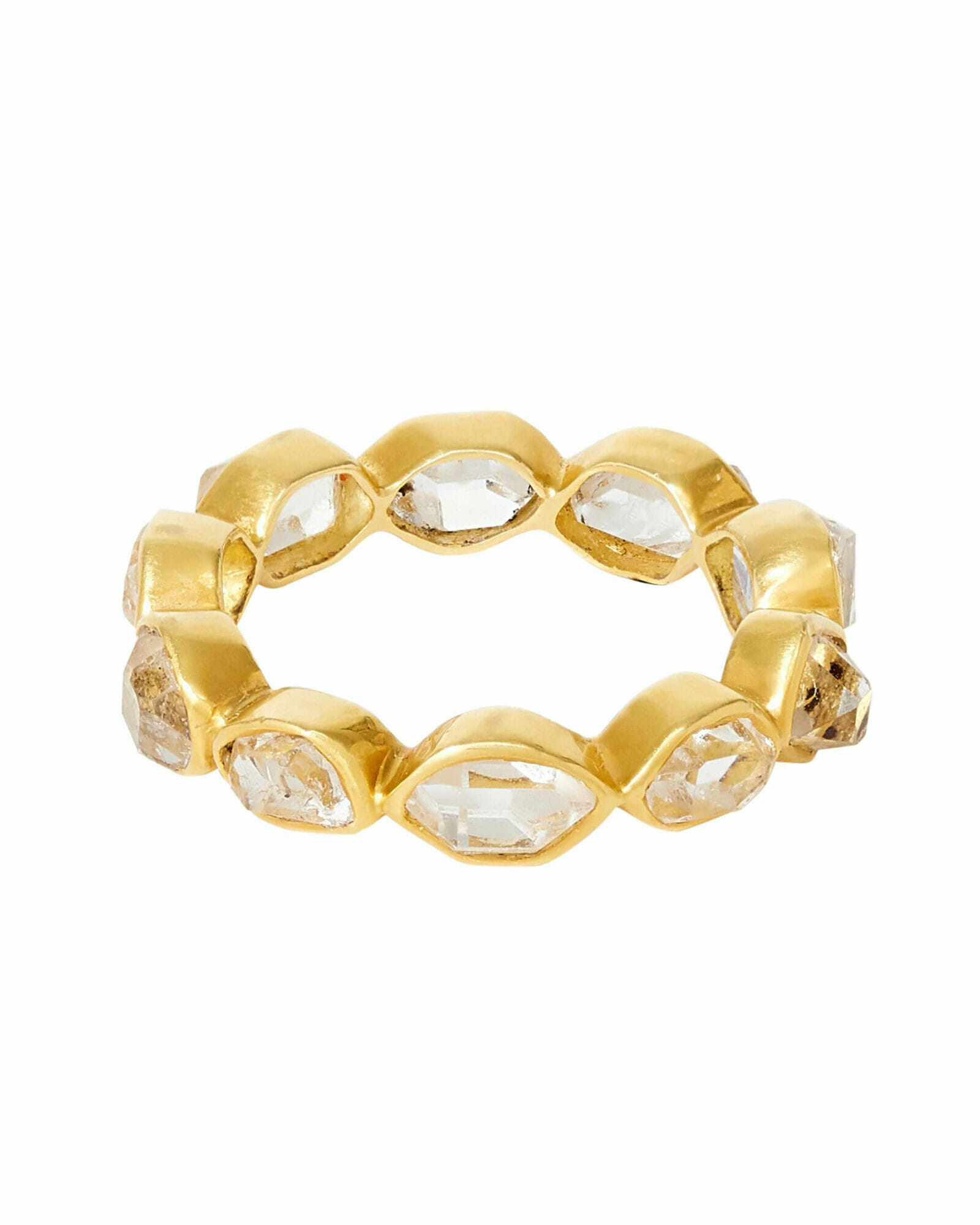

Most brides today say they want a unique design, and they want to get as large a stone as their budget affords. Polki diamonds check both those boxes.
London-based designer Pippa Small explains why polkis offer bang for the buck: “Polki diamonds are relatively flat which means their spread is wider rather than deeper, allowing a low setting and larger feel,” she said. In fact, the designer (who is known for natural style jewelry) even says that she prefers the unevenness of the diamonds.“ They feel less ‘transformed’ from the natural material and are more organic.”
It’s not just price-driven; it’s also about style, says Kasliwal. “Polki diamond engagement rings are for the bride who is quite adventurous and wants a natural diamond with a lot of personality that is quite unique.”
When it comes to assessing these diamonds, the overall look and organic style is valued rather than the 4Cs, which don’t apply to the uncut polki. New York designer Jean Prounis favors the stones in her handmade gold jewelry designs.
“I find the stones to be a celebration of the natural beauty and history,” says Prounis. Her one-of-a-kind pieces are designed around the uniqueness of the natural stones.

“I’m seeing more folks move towards a more casual and mindful approach to their fine jewelry collections, especially with diamonds,” says Prounis. “They are looking for pieces they can wear daily and will endure the knicks and knacks of everyday life. Rough and included diamonds allow our clients to wear the durability of a diamond in a way that rings true to their individuality.”
There’s one more reason some may find these diamonds mesmerizing, according to Kasliwal: “Historically they were used as they were found, as there was a belief that keeping them intact helped them retain their power.” After all, everyone needs a little magic in their lives.
